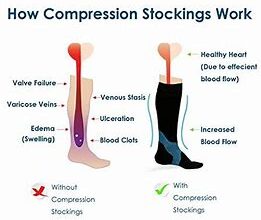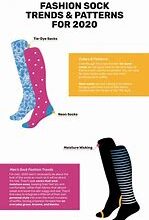Writing is an important skill that children learn as part of their overall development. However, some children face difficulties when it comes to writing, such as mirror writing. Mirror writing is a unique form of writing where letters and words are written in a reversed or mirror image direction. For these children, it is essential to gain support from specialists and educators who understand the specific challenges they face in developing regular writing skills.
In some cases, mirror writing can be observed in the classroom environment, where children may write their words and letters backwards without even realizing it. This can be a result of poor muscle dominance and a lack of awareness of the correct directionality of writing. It is important for parents and educators to address these difficulties and provide interventions to help children overcome mirror writing.
One technique that can be used to help children with mirror writing is tracing. By tracing letters and words in the correct direction, children can develop a better sense of the physical movements required for writing. This can also help them gain a better understanding of the difference between left and right, which is crucial for developing proper writing skills.
Furthermore, it is suggested that parents and educators provide a supportive and encouraging environment for children who struggle with mirror writing. These children may sometimes feel frustrated or discouraged by their difficulties, so it is important to offer positive reinforcement and praise for any progress they make. By creating a positive and supportive atmosphere, children are more likely to feel motivated and confident in improving their writing abilities.
It is also important to note that mirror writing is not always a cause for concern. Some children may naturally write in a reversed or mirrored direction as part of their unique learning style. In such cases, educators may consider providing alternative approaches to language instruction, such as incorporating visual aids or using materials specifically designed for children with mirror writing difficulties. By adjusting teaching methods to accommodate these children, educators can help them read and write more effectively.
Overall, mirror writing can be a challenging skill for children to overcome, but with the right guidance and support, they can learn to write in the correct direction. By addressing the causes of mirror writing and implementing appropriate interventions, parents and educators can help children develop the ability to write confidently and effectively.
Understanding Mirror Writing in Children
Mirror writing refers to writing that appears as a mirror image of normal writing, meaning that letters are reversed or flipped horizontally. While mirror writing is often seen as a novelty, it can sometimes be a cause for concern, particularly in young children who are learning to write.
Many children may occasionally engage in mirror writing when they first begin to write, and this is typically considered a normal part of the learning process. However, if mirror writing continues beyond a certain age or becomes a frequent occurrence, it may indicate a need for additional support or intervention.
There are several factors that can contribute to mirror writing in children. One factor is left-handedness. Left-handed individuals may naturally develop a mirror writing style due to the way their muscles move when writing. This can be addressed by providing guidance and practice to help them learn to write in the traditional left-to-right direction.
In some cases, mirror writing may be influenced by the classroom environment. Children who receive limited or inconsistent instruction in writing may struggle to develop a clear understanding of the correct direction for writing letters. This can be addressed by providing more structured and encouraging instruction, as well as opportunities for practice.
It is important to note that mirror writing is not always a sign of a learning difficulty or cognitive impairment. Some children may simply prefer to write in a mirror image because they find it more comfortable or enjoyable. In such cases, it is recommended to observe and encourage the child’s progress while also providing guidance on writing in the traditional direction.
Improving awareness of the correct writing direction can be done through various interventions. For example, providing models of correctly written letters and words can help children visualize the correct orientation. Additionally, using language and instructions that emphasize the left-to-right direction can reinforce this concept.
In some instances, mirror writing may be accompanied by other difficulties in language or cognitive skills. In these cases, it is important to address the underlying challenges while also providing support for improving writing skills.
Parents can also play a crucial role in helping children overcome mirror writing. By providing additional practice and guidance at home, parents can reinforce the correct writing direction and address any confusion or difficulties the child may be experiencing.
In conclusion, understanding mirror writing in children requires recognizing the various factors that can contribute to this phenomenon. While mirror writing can sometimes be seen as a normal part of the learning process, it is important to address any ongoing difficulties and provide the necessary support and intervention to help children develop their writing skills effectively.
What is mirror writing
Mirror writing is a phenomenon where children write in a right-to-left direction instead of the regular left-to-right direction. While it is common for developing writers to sometimes write a few letters in reverse, mirror writing is more than just occasional mistakes. It refers to consistently writing letters and words in a mirrored or flipped manner.
Mirror writing can occur in both right-handed and left-handed individuals, but it is more commonly observed in left-handed individuals. This is because left-handed writers naturally have a tendency to move their hand in the opposite direction, which can lead to mirror writing. However, it is important to note that not all left-handed individuals will experience mirror writing, and it can also be observed in right-handed individuals as well.
The causes of mirror writing are not fully understood, but it is believed to be related to the dominance of one hand over the other. Hand dominance refers to the preference of an individual to use one hand over the other for various tasks. Mirror writing can also be influenced by the direction of language, as some languages are written in a right-to-left direction.
Mirror writing can create challenges for individuals in educational settings. It can lead to confusion and difficulty in tracing letters and reading materials. In some cases, it may even cause frustration and a lack of progress in learning to write. Hand-eye coordination, awareness of letter formation, and language skills are all more important in mirror writing. Therefore, it is essential for parents, educators, and specialists to provide support and reinforcement to help children overcome their mirror writing style.
In the classroom, teachers can help by providing extra practice and opportunities for writing. They can also encourage proper letter formation and provide reinforcement when the child writes in the correct direction. It is important to avoid isolating the child or causing unnecessary stress. Instead, the focus should be on building confidence and helping the child develop their own unique writing style.
The phenomenon of mirror writing
Mirror writing is a phenomenon commonly observed in young children, especially those in the early stages of learning to write. It is characterized by the reversed or flipped orientation of letters and words, making them appear as mirror images.
Between the ages of 3 and 6, many children naturally go through a phase of mirror writing as they develop their hand-eye coordination and fine motor skills. This phenomenon is seen as a normal part of the learning process and is not a cause for concern.
However, for some children, mirror writing may persist beyond the expected age range, or it may be accompanied by other delays in reading or writing. In these cases, interventions and guidance from educators and parents can help children overcome this unique challenge.
One possible cause of mirror writing is a delay in the development of the dominant hand. When a child writes with their non-dominant hand, it may lead to the creation of mirror images. Providing support and practice for developing the proper hand dominance can help improve their writing skills.
Another factor that can contribute to mirror writing is a visual-spatial processing issue. Some children may have difficulty perceiving the orientation of letters and words correctly. Engaging in exercises and activities that focus on visual-spatial skills can help improve their ability to recognize and reproduce letters in the correct orientation.
Furthermore, poor phonological awareness, which is the understanding of the sounds and structure of language, can also impact a child’s ability to write correctly. By working on phonological skills through activities such as rhyming and sound recognition, children can strengthen their language processing abilities and improve their writing skills.
It is important for educators and parents to create a supportive and encouraging environment for children who struggle with mirror writing. Providing them with appropriate guidance and interventions can help them overcome this challenge and develop their writing skills in a more conventional manner.
| Overall, mirror writing is a normal part of the learning process for many young children. However, in cases where it persists or is accompanied by other delays, it is important to provide the necessary support and interventions to help children overcome this unique difficulty. By practicing motor skills, improving visual-spatial processing, and working on phonological awareness, children can develop their writing skills and overcome mirror writing. |
Causes of mirror writing
Mirror writing is the action of writing in a reversed direction, often from right to left, making it appear like a mirror image. While it is natural for young children to experiment with different forms of communication, mirror writing can become a challenging habit to correct. Understanding the causes of mirror writing can be helpful in developing interventions and strategies to improve children’s writing skills.
One possible cause of mirror writing is left-handedness. Some studies suggest that left-handed children may be more prone to mirror writing due to the unique way the brain of a left-handed person develops. In the classroom, educators should be aware of the impact of left-handedness and provide supportive guidance and reinforcement to help left-handed children write in the correct direction.
Another cause of mirror writing can be a lack of awareness or confusion about the correct direction of writing. Children may sometimes trace letters or words in a mirrored fashion without realizing the error. Early interventions that focus on teaching children the correct direction of writing can be helpful in improving their writing skills.
Anxiety and stress can also contribute to mirror writing. Children who feel anxious or stressed may revert to mirror writing as a means of coping or seeking comfort. Creating a supportive and stress-free learning environment can help alleviate these emotional factors and reduce mirror writing tendencies.
Furthermore, mirror writing can also be influenced by social factors. Children may imitate others who write in a mirrored fashion, especially if they observe their parents or peers doing so. Educating parents and creating awareness among the community can help prevent mirror writing from becoming a norm.
In some cases, mirror writing may be considered a natural part of a child’s development. Research suggests that mirror writing can actually be a sign of advanced cognitive abilities and creativity. Rather than focusing on correcting mirror writing, educators and parents can instead encourage and support children to explore their unique writing styles.
Overall, understanding the various causes of mirror writing is crucial in developing effective educational interventions and strategies. By providing guidance, reinforcement, and a supportive learning environment, educators and parents can help children overcome mirror writing difficulties and develop strong writing skills.
Effects of mirror writing on children
When children exhibit mirror writing, it can have a significant impact on their learning and development. Mirror writing refers to the phenomenon where letters or words are written in a flipped or reverse direction, as if seen through a mirror. This can cause difficulties with letter formation, proper directionality, and overall written communication.
For children who are learning to read and write, mirror writing can be particularly challenging. It can lead to frustration, poor phonological awareness, and difficulties in recognizing words and letters. Additionally, mirror writing can affect the motor skills required for writing, making it harder for children to progress in their written abilities.
Parents and educators may find it necessary to provide additional support and reinforcement to children who struggle with mirror writing. Encouraging proper letter formation and tracing exercises can help children understand the correct directionality of letters and words. For left-handed children, who may naturally write in a mirror image, it is important to teach them proper letter formation and not reinforce mirror writing.
It is also important to address the underlying causes of mirror writing. While mirror writing can sometimes be a natural phase of development and may resolve on its own, in other cases, it may be a sign of learning difficulties or challenges with spatial awareness. Evaluating and understanding the root causes of mirror writing can help parents and educators tailor interventions and teaching strategies to best support the child’s progress.
Supportive and patient teaching techniques can help children overcome mirror writing challenges. Providing clear and consistent instruction, along with plenty of practice and reinforcement, can help children gradually develop proper writing skills. It is important for parents and educators to continue to communicate and collaborate in order to effectively address mirror writing difficulties.
In some cases, mirror writing may persist even with intervention. While it is important to continue teaching and supporting the child, it is also crucial to consider alternative communication methods or accommodations to help the child succeed. For example, using technology or assistive devices can aid the child in overcoming the challenges posed by mirror writing.
Overall, mirror writing can pose significant challenges for children in their learning and communication. By identifying and addressing these difficulties early on, parents and educators can help children gain the necessary skills to overcome mirror writing and succeed academically.
Impact on reading and writing skills
The additional challenge of developing reading and writing skills in children who have mirror writing can have an impact on their overall language development. Mirror writing can create confusion in the classroom environment, where words are usually written from left to right. This confusion may lead to difficulties in reading and writing, as well as challenges in communication and visual-spatial awareness.
Individuals who have mirror writing may sometimes face isolation and feelings of frustration due to their unique writing style. As left-handedness suggests a dominance of the right brain hemisphere, which is often associated with visual-spatial processing, left-handed individuals may have a more difficult time with phonological awareness and letter-sound correspondence.
In order to help children improve their reading and writing skills, interventions and specialist guidance may be necessary. Regular practicing of reading and writing in a supportive and reinforcing environment can help individuals develop a more regular writing style and improve their letter and word recognition. Motor skills, such as fine motor coordination, may also need to be addressed to further support the development of proper writing skills.
It is important to consider that each child is unique and may have different causes for mirror writing. Some children may simply need more practice and reinforcement, while others may require specialized interventions to address underlying issues that impact their reading and writing abilities.
Social and emotional challenges

Children who struggle with mirror writing may also face social and emotional challenges. It’s important to encourage and support them in developing the necessary hand-eye coordination and motor skills to write in the proper direction.
Seeking the help of a specialist or an educational psychologist can address these challenges. They can provide exercises to improve hand-eye coordination and motor skills, helping children feel less frustrated and more confident in their writing abilities.
Reversed writing can sometimes lead to feelings of uniqueness and frustration. Research suggests that these feelings may be accompanied by visual-spatial difficulties, which can impact reading and other academic tasks.
In some cases, children may also exhibit a preference for using their left hand instead of their right hand for writing. This left-handed dominance can further complicate the learning process and the development of proper writing skills.
Proper interventions, such as encouraging the use of the dominant hand and providing flipped or mirrored writing exercises, can improve overall progress. Educators can play a vital role in helping children gain confidence and improve their writing style.
It is important to note that improving mirror writing skills does not mean that all other challenges will automatically disappear. However, by addressing these challenges and providing proper support, children can make significant progress in their academic and emotional development.
- Encourage hand-eye coordination and motor skill development.
- Seek specialist help to address social and emotional challenges.
- Provide exercises to improve visual-spatial difficulties.
- Address left-handed dominance and its impact on learning.
- Use flipped or mirrored writing exercises to improve writing skills.
- Support overall progress and confidence development.
Evaluating and Addressing Mirror Writing
Mirror writing is a phenomenon in which individuals have a difficulty writing letters, words, or sentences in the proper order. It can often lead to issues in reading and comprehension, as words and sentences may be written in reverse or backwards.
When evaluating mirror writing, it is important to first determine the underlying cause of the difficulty. It suggests that more specialized instruction may be necessary for those who continue to struggle with mirror writing, as it may be a part of other learning challenges or language disorders.
Addressing mirror writing can be done through various techniques and exercises. One approach is to reinforce letter and word formation ability by practicing writing letters and words in the correct direction. Another technique is to encourage awareness of left and right by incorporating activities that focus on developing this awareness, instead of regular teaching.
Additional guidance from a specialist may be needed to help children overcome mirror writing difficulties. They can provide specific exercises and instruction to address the challenges faced by those who struggle with mirror writing. These exercises can be tailored to the individual’s needs and may be accompanied by language reinforcement as well.
In the classroom environment, teachers can play a significant role in improving a child’s mirror writing performance. By providing proper guidance and instruction, teachers can help build the confidence and ability of children who struggle with mirror writing. Creating an encouraging and supportive environment may also help to reduce stress and confusion for those who face mirror writing difficulties.
For young children who are still developing their writing skills, it is important to address mirror writing early on. By teaching proper letter formation and encouraging correct dominance, teachers can help prevent mirror writing from becoming a persistent issue. Moreover, individualized instruction and exercises can be implemented to improve mirror writing skills.
In conclusion, mirror writing can be a challenging issue for many individuals, especially children. However, with the right evaluation and addressing techniques, it can be effectively addressed and improved. By providing additional support and guidance, teachers and specialists can help individuals overcome mirror writing and build their confidence in reading and writing.





